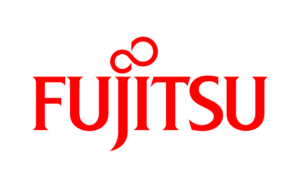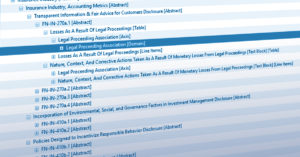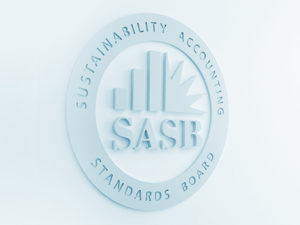
Madhu Mathew, Director of Technology, SASB
At SASB, we are always watching for innovations that streamline the flow of non-financial information between companies and investors. Companies increasingly turn to digital tools and processes to simplify both reporting and use of corporate performance data. The use of structured data and eXtensible Business Reporting Language (XBRL) is one of the most promising advancements, with positive implications for data producers and data consumers. Already embedded in many financial accounting standards and reporting requirements, XBRL taxonomies define key business terms and validation rules. XBRL provides a structure for data preparation, assurance, and analysis that can be used for both financial and non-financial data.
In 2014, we convened a large multi-stakeholder task force consisting of investment organisations, data aggregators, technology tool providers, accounting organisations, and public policy experts. This group examined the compatibility of SASB Standards with XBRL. The task force concluded that the SASB Standards lend themselves well to structured reporting using XBRL and can form a powerful tool for the collection, analysis, and assurance of sustainability information. As we see increased recognition and adoption of SASB Standards, the timing is perfect to bring SASB XBRL taxonomy to the market. That is why we are pleased to announce that SASB engaged PwC to support us in the development of a SASB XBRL taxonomy, under SASB’s guidance.
PwC has historically been an active member of the XBRL community through participation in XBRL US and XBRL International. Wes Bricker, PwC US & Mexico Assurance leader, currently serves as Vice Chair of XBRL International Board of Directors. Additionally, PwC views the increase of reporting environmental, social and governance (ESG) information by companies as a positive trend in the capital markets. The firm remains committed to supporting transparency in reporting.
What is XBRL?
In a nutshell, XBRL provides a language in which reporting terms can be authoritatively defined. Those terms can then be used to uniquely represent the contents of financial statements or other kinds of compliance, performance, and business reports. XBRL lets reporting information move between organisations rapidly, accurately, and digitally.
The change from paper, PDF, and HTML based reports to XBRL ones is a little bit like the change from film photography to digital photography, or from paper maps to digital maps. The new format allows you to do all the things that used to be possible, but also opens up a range of new capabilities because the information is clearly defined, platform-independent, testable, and digital. Just like digital maps, digital business reports, in XBRL format, simplify the way that people can use, share, analyse, and add value to the data.
(Source: An introduction to XBRL)
Regulatory and Market Trends
Many regulatory bodies already mandate the use of XBRL for financial disclosures in their jurisdictions. In 2008, Japan’s Financial Services Agency (FSA) required the use of XBRL for corporate disclosure documents, and in 2013, they updated this guidance to include Inline XBRL (iXBRL). More recently, the European Securities and Markets Authority (ESMA)’s European Single Electronic Format (ESEF) and the United States Securities and Exchange Commission (US SEC) mandated iXBRL tagging of annual financial reports, as have many other regulators and exchanges. XBRL gained traction with regulators because the format lends itself to analysis and dissemination of large amounts of information.
We see increased market appetite for high quality non-financial information. Investors and regulators have articulated the need for comparable and reliable environmental, social, and governance (ESG) data. Unfortunately, the content and format of corporate disclosure varies widely today, making it difficult to evaluate and compare. By providing a common language for disclosing financially material sustainability information, SASB Standards facilitate the communication of comparable, consistent, and reliable data. By providing a common language for business reporting, XBRL can further enhance the quality and usefulness of SASB disclosures. Examinations of regions with widespread use of XBRL in financial reports suggest a positive impact on data quality. Research using SASB’s materiality framework indicates that positive performance on ESG issues correlates with stronger financial performance. We expect that producing SASB-aligned disclosures in structured XBRL format will allow for easier collection, rigorous assurance, and comprehensive analysis of non-financial data.
XBRL is a well-established tool for financial reporting, which provides a solid foundation for a useful and cost-effective integration of a SASB taxonomy into existing infrastructure. The most widely used financial accounting standards have XBRL taxonomies already. Listed companies producing annual financial reports in regions with XBRL mandates are likely familiar with XBRL, which lowers the barriers to them adopting a SASB XBRL taxonomy. Similarly, many corporate reporting software providers and auditors already have technology for collecting and reporting data in XBRL format and are interested in applying these same processes to sustainability performance information. When used in tandem, SASB Standards and XBRL could provide cascading benefits across the market ecosystem.
SASB’s Engagement of PwC
Over the next few months, PwC will be working with SASB to convert our 77 Standards into an XBRL taxonomy. During the taxonomy development process, SASB will continue engaging with stakeholders to confirm the taxonomy enables compatibility and ease of use. A key element that makes XBRL an effective tool for integrating SASB into existing structured reporting infrastructure is that X factor – extensibility. SASB’s taxonomy can be built to plug into base taxonomies for financial accounting standards (like IFRS and US GAAP), which allows organisations to leverage pre-existing processes and structures. PwC is also helping to craft a data preparer’s guide that will support companies and consultants by providing guidance on tagging non-financial information and disclosing it through regulatory and non-regulatory channels.
Later this year, we expect to release an exposure draft of the XBRL taxonomy and data preparer’s guide for public comment. We also plan to publish a white paper showcasing various possibilities of SASB-aligned disclosures using XBRL.
To learn more about SASB’s XBRL effort and stay informed about updates, please contact us at [email protected].
Madhu Mathew is Director of Technology at SASB, and is leading SASB’s XBRL effort with support from Ellen Monroe, Project Manager at SASB.

SASB utilises Fujitsu XWand tools in its XBRL taxonomy creation process to enable structured reporting on SASB Standards.



